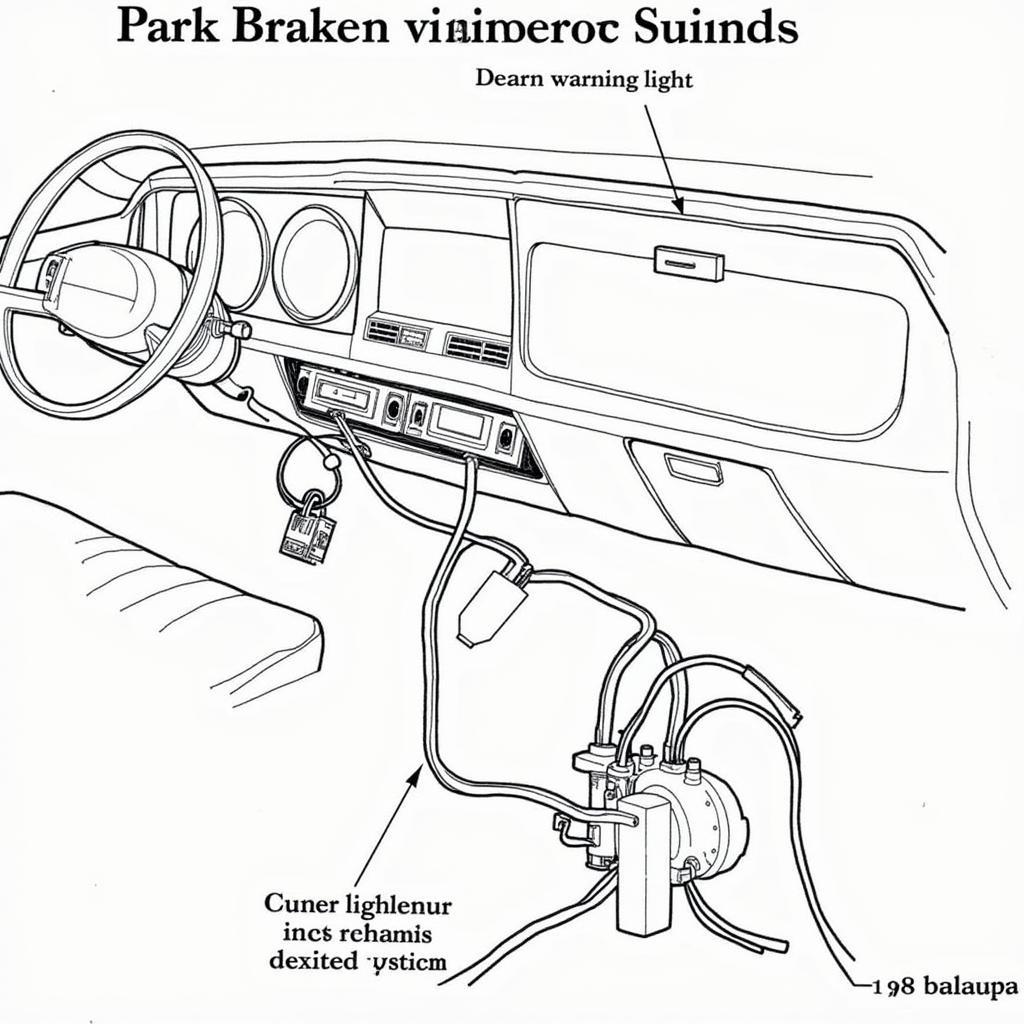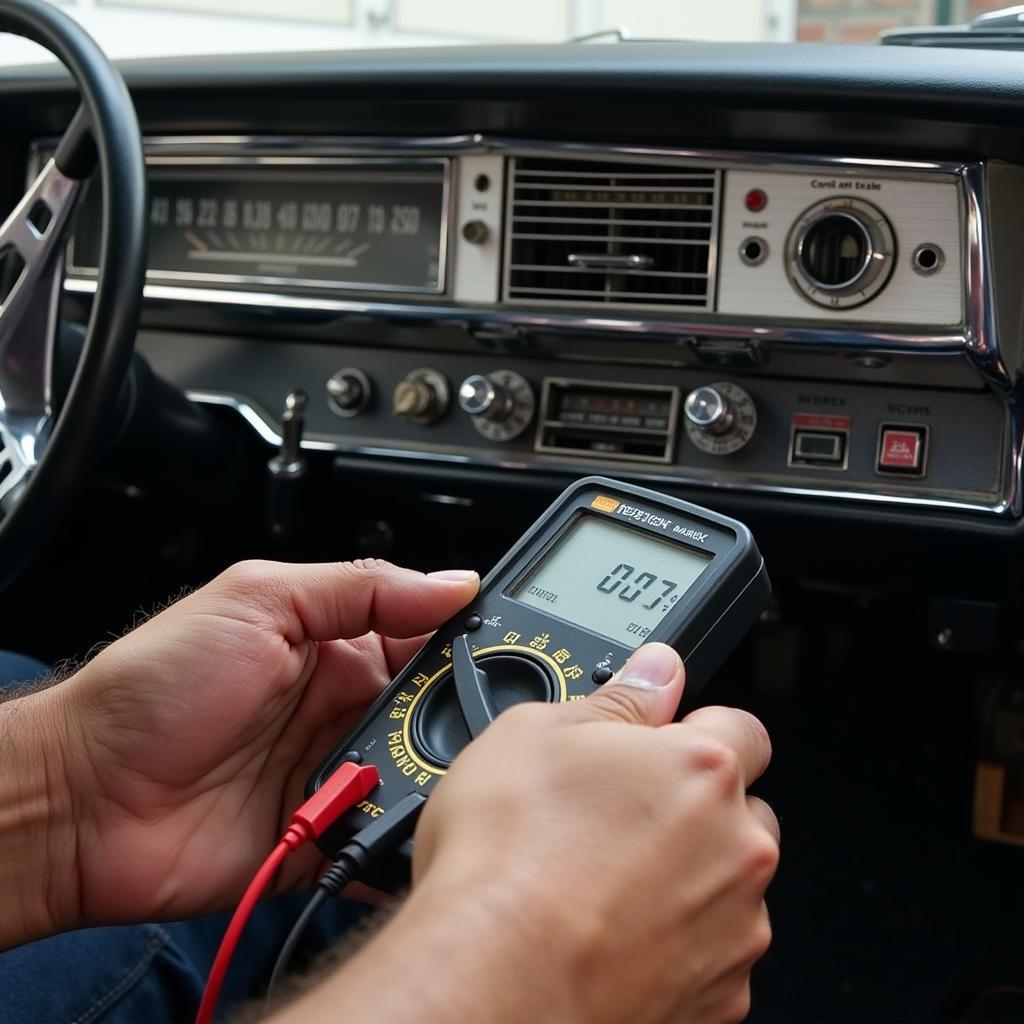The 1963 Buick Riviera, a classic beauty known for its sleek lines and powerful performance, can sometimes present unique challenges for enthusiasts. One such challenge involves the park brake warning switch, a critical safety component that can, if faulty, lead to unnecessary headaches. This comprehensive guide delves into the intricacies of the 1963 Riviera’s park brake warning switch, providing you with the knowledge to diagnose, troubleshoot, and potentially resolve issues related to this component.
 1963 Buick Riviera Park Brake System
1963 Buick Riviera Park Brake System
Understanding the Park Brake Warning Switch
The park brake warning switch in your 1963 Riviera serves a crucial safety function. Its primary role is to illuminate a warning light on your dashboard when the parking brake is engaged. This visual cue reminds you to disengage the parking brake before driving, preventing potential damage to the braking system and ensuring a smooth start to your journey.
The switch itself is a relatively simple device, often located near the parking brake lever or pedal assembly. It operates on a basic principle: when the parking brake is applied, a mechanical lever or plunger within the switch is activated, closing an electrical circuit. This closed circuit allows current to flow to the dashboard warning light, illuminating it and signaling that the parking brake is engaged.
Common Symptoms of a Faulty Switch
A malfunctioning park brake warning switch can manifest itself in a few telltale ways:
- Constantly illuminated warning light: If you find the park brake warning light on your dashboard stays on even when the parking brake is fully released, it’s a strong indication of a problem with the switch. This could mean the switch is stuck in the “on” position, sending a false signal to the warning light.
- Intermittently illuminated warning light: A flickering or intermittently illuminated warning light can also point to a faulty switch. This often suggests a loose connection within the switch or a worn-out contact point that disrupts the electrical circuit intermittently.
- No warning light illumination: Conversely, if the warning light fails to illuminate at all when the parking brake is engaged, it could signify a complete failure of the switch or a break in the wiring leading to it.
Diagnosing the Issue: A Step-by-Step Approach
Before diving into repairs, it’s essential to confirm that the park brake warning switch is indeed the culprit. Here’s a systematic approach to diagnosing the issue:
- Visual Inspection: Begin by visually inspecting the switch itself. Look for any signs of physical damage, loose connections, or corrosion. Pay close attention to the wiring harness connected to the switch, checking for any frayed wires or loose connections.
- Test the Switch: With the parking brake released, disconnect the wiring harness from the switch. Using a multimeter set to the continuity setting, touch one probe to each terminal on the switch. You should see a closed circuit (continuity) when the parking brake is engaged and an open circuit when it’s released.
- Check the Wiring: If the switch tests fine, the issue might lie within the wiring. Inspect the wiring harness for any breaks, shorts, or damage. Pay close attention to the section of the harness that runs near the parking brake mechanism, as this area is prone to wear and tear.
- Inspect the Dashboard Light: Finally, ensure the dashboard warning light itself is functioning correctly. You can test this by temporarily connecting a separate wire from the battery’s positive terminal to the warning light’s positive terminal. If the light illuminates, the issue lies elsewhere in the circuit.
 Testing the 1963 Riviera Park Brake Switch for Continuity
Testing the 1963 Riviera Park Brake Switch for Continuity
Resolving the Issue: Repair or Replace?
Once you’ve pinpointed the source of the problem, you can decide whether to repair or replace the faulty component.
- Repairing the Switch: In some cases, a simple cleaning or adjustment can resolve minor issues with the switch. For instance, if corrosion is present, cleaning the switch contacts with electrical contact cleaner might suffice.
- Replacing the Switch: If the switch is severely damaged, worn out, or beyond repair, replacement is the most viable option. Fortunately, replacement park brake warning switches for a 1963 Riviera are readily available from various automotive parts suppliers.
Seeking Professional Assistance
While diagnosing and resolving issues with the park brake warning switch is achievable for many car enthusiasts, it’s essential to acknowledge your limitations. If you’re uncomfortable working with electrical components or lack the necessary tools, don’t hesitate to seek assistance from a qualified mechanic specializing in classic cars. They possess the expertise and experience to diagnose and repair the issue safely and effectively.
A Word of Caution
Remember, the park brake warning switch plays a crucial role in your 1963 Riviera’s safe operation. Driving with a faulty switch can not only damage your car but also pose a safety hazard. Addressing the issue promptly ensures your classic beauty continues to perform flawlessly for years to come.
